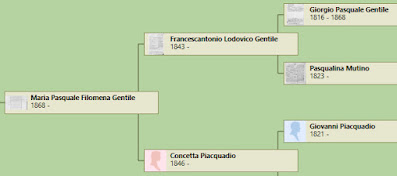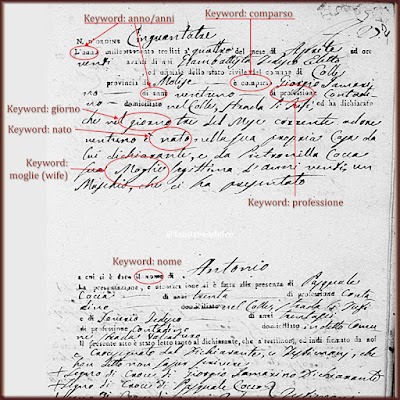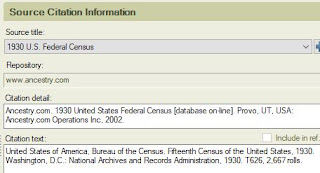"Trust, but verify" is a translation of an old Russian proverb that reminds you to find the truth for yourself. It's particularly useful when applied to genealogy.
Here are some situations where "trust, but verify" should pop into your head:
- A relative gives you their family tree with no sources.
- A stranger's online family tree seems like it may connect to yours.
- An elder tells you a bunch of family facts they remember from decades ago.
You may trust the relative or the elder, but you've got to verify their work.
How to Handle Unsourced Names and Dates
 |
| You can use an image to alert you to unsourced facts in your family tree. |
You welcome the new information. You're excited to have it. But take steps to mark this new set of names and dates as unsourced. Some options for marking this content are:
- Add a bookmark to each unsourced person in your family tree software.
- Add a profile image to each unsourced person, such as this graphic that says "No sources".
- Create a source citation using the name of the person who shared the information with you.
- Attach no source at all. Personally, I've been very diligent about attaching sources. If I find people in my tree without a source attached, I know someone handed those people to me.
This step to identify unverified information can save future-you a big headache.
The moment you receive a batch of new information, add it to your genealogy to-do list. You need to put some research time into proving or disproving these unsourced facts.
Think how satisfying it'll be when you can replace an individual's "no sources" graphic with an image of their birth record.
How to Figure Out the Facts
Eleven years ago a man named John saw my For the Cousins website and emailed me. He's part of a large group of Italian immigrants and their children in Niagara Falls, Canada. They all came from my paternal grandfather's hometown in Italy.
Four months later, my aunt and I flew up to meet this Italian enclave at their annual dinner party. I brought a big family tree printout with me. As I met and talked with many of the people, they shared lots of names and relationships with me. Together we added branches to my tree.
Eleven years is a long time, but now I have all the available vital records from my grandfather's hometown on my computer. This past weekend, while looking at my family tree for a new section to explore, and I found the Canadian branch.
 |
| Add a person's birth record as their photo so you know you have the proof. |
 |
| This 1887 birth record includes names and dates for 2 marriages. |
Here are a few pointers when working with someone else's tree:
- Expect some names to be slightly different. If your contact's tree comes from family sources, they may remember their "Uncle Antonio". But his birth record may show his given name was:
- Michelantonio
- Giovannantonio
- Giuseppantonio or
- Nicolantonio.
- Check a person's parent's names in the tree to decide if you've found the right birth record. If both mother and father match, you've probably found either the right person's birth record or that of a sibling. Is the birth year what you expected?
- Look for marriage data in the margin of birth records. This is more common on more modern birth records. It's less often found on very old records. Sometimes this annotation is exactly what you need to be sure you've found the right person.
The best surprise in this branch is that John from Canada is related to a set of my cousins through their father. I'm related to them through their mother.
But knowing this small town's high rate of intermarriage, I'm sure I'll find I'm related to John in half a dozen ways!
As I search for more connections, I'm gathering vital records and fortifying my family tree.















